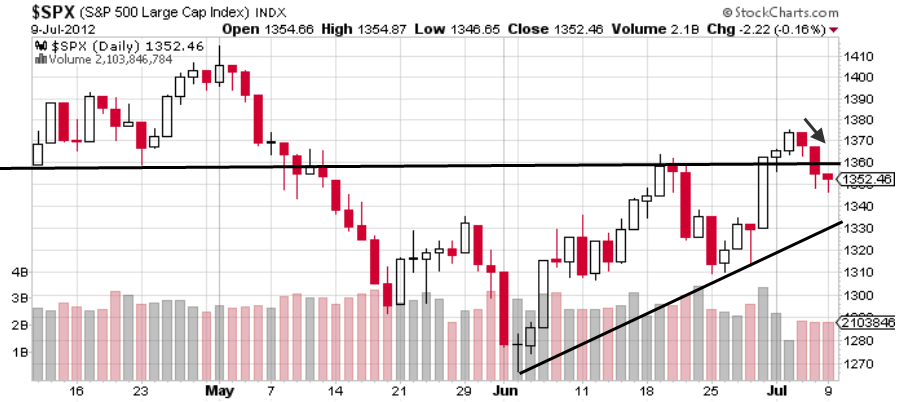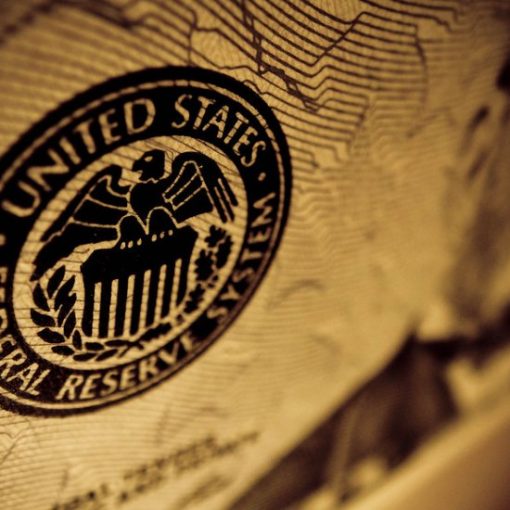by : Jon Maier, Michelle Cluver, Morgane Delledonne, Pedro Palandrani & Rohan Reddy
Expectations surrounding central bank policy, China’s gradual reopening and a lower US dollar are key to investor sentiment in the final stretch of 2022. Inflation remains elevated and economic growth expectations are subdued, but shifts away from excess pessimism may start presenting opportunities beyond the U.S.
Global Macro
Interest rate differentials have reduced while European energy crisis concerns have decreased slightly as Europe seems adequately prepared for winter. This establishes an improved backdrop for risk assets while potentially pointing to a lower in the U.S. dollar. We maintained our views on U.S. (overweight), international developed equities (neutral) and Emerging markets (neutral).
Regional Macro
| U.S. Equities | Overweight |
| International Developed Market Equities | Neutral |
| Emerging Market Equities | Neutral |
United States: Slower Trajectory, but Restrictive for Longer
Central banks have increased interest rates at the fastest rate on record, and there are signs that higher yields are starting to flow into the economy; however, the full impact of higher yields will likely only be felt in 2023.1 Central banks globally are hinting at a deceleration of rate hikes as tighter financial conditions are having an impact on inflation. At their November meeting, the U.S. Fed changed their wording, signaling they may lessen the pace of rate increases while shifting the focus to a potentially higher terminal rate and the length of time that the Fed is likely to remain restrictive. More recently, Fed Chair Powell indicated that smaller interest rate hikes could begin in December. We currently expect the terminal rate to be around 5% mid next year followed by a stabilization period for interest rate at that level.
We maintained our overweight tilt toward U.S. equities as the Fed is raising interest rates while the U.S. economy remains in a strong position relative to most other economies. However, we are seeing emerging weaknesses in economic data warranting a cautious approach. Unemployment remains low but the declining number of job openings signals weakening in the labor market. In this environment, “bad news” is “good news”. Personal consumption remained strong in the third quarter although we’ve noted the increased reliance on credit card debt for consumption while the personal savings rate is nearing its lowest level since 2005. Consumption, increased unemployment and elevated inflation remain key areas of focus as economic fundamentals slow.
The depreciation of the U.S. dollar versus its major peers is supporting U.S. equities and particularly internationally exposed companies, including tech companies.
International Developed Markets: Potential to Surprise to the Upside
Europe appears to be in a stronger position than expected going into winter. European natural gas prices have decreased from their summer highs as the continent successfully shifted gas sourcing. Valuations are starting to look more attractive in Europe presenting opportunities as pessimism decreases. Given a deceleration in inflation, we expect the European Central Bank to likely adopt a lower pace of rate hikes amid declining headline CPI inflation. All these positive factors have provided a backdrop for the U.S. dollar to weaken, which is a positive factor globally.
Japan is a region that stands out from a policy divergence perspective. The Bank of Japan has yet to begin raising interest rates consequently, their currency is under pressure for moving against the global tide.
Emerging Market Equity: Beneficiary of Lower USD and Possible Gradual Reopening of China
A lower U.S. dollar coupled with growth-supportive measures in China, including some easing of COVID restrictions, a real estate rescue plan and expectations of more easing of financial conditions from the People Bank of China, helped Chinese equities rebound. More broadly, the rebound improved investors’ sentiment on emerging markets (EM). Improved sentiment was also supported by dialogue resuming between China and the U.S. following a meeting between President Biden and President Xi at G20 meetings. Although valuations look attractive, the recent protests against Covid ZERO policy could drive more for the volatility among EM near-term.
Asset Class Views
Both equities and fixed income stand to benefit as the Fed’s trajectory slows. While the economic situation is deteriorating, markets typically bottom before the economy. However, with the rates across the U.S. Treasury curve increasingly positive in real terms and rising recession risks, we believe it’s increasingly important to incorporate a barbel approach that includes longer-duration income like exposures to long duration U.S. Treasuries.
We prefer commodities over other assets, but with a somewhat more muted outlook that is increasingly tied to the possible reopening of China. A global economic slowdown clouds the outlook for economic growth focused commodities. However, commodities stand to benefit from a potential shift away from USD strength.
Sub Asset Class & Industry Views
Increased focus on defensive segments with strong cash flows. Preferred sectors include Health Care, Consumer Staples, and Utilities while discretionary consumption remains an area of concern. For more detail, please refer to our sector views blog post.
Inflation protection could be balanced with quality, defensive equity positions. We also view assets tied to derivatives like covered call strategies and those targeting rising interest rates as potentially attractive with volatility remaining elevated.
Product Opportunities
- Lithium & Battery Tech – In November 2022, prices for battery grade lithium carbonate in China hit an all-time high of $85,058 per tonne, eclipsing the record set just a month prior.2 Lithium pricing trends are deeply rooted in the transportation segment’s ongoing shift toward electrification. Elevated lithium prices boost the top and bottom lines for relevant miners.
- Cyber Security – Cyber Attacks across all industry sectors increased by 28% YoY in the third quarter of 2022.3 A continued rise in these numbers is expected as cloud adoption increases, end-point devices gain penetration, and geopolitical conflicts persist. These pressures are likely going to drive greater spending at the corporate and government levels.
- U. S. Infrastructure Development – U.S. Infrastructure Development continues to be a resilient theme. The 2021 “infrastructure trade” may have passed, but the unwind has created a potential buying opportunity. Longer-term, the Infrastructure Bill from 2021 only accounted for $1.2 trillion of the estimated $2.6 trillion in infrastructure spending over the next 10 years, and private sector investment may be positioned to help fund the shortfall.4
- Commodities & Uranium – Commodity assets like precious metals look attractive in this environment as investors look for ways to mitigate inflationary risks in their portfolios. Silver in particular screens positively as current valuations, potential improving industrial demand, and negative China expectations priced in already creates a good setup for silver. Uranium is also a specific segment of the energy market with both attractive supply & demand fundamentals and displays the traits of a commodity asset with the ability to mitigate against inflationary pressures. The ongoing energy security crisis and unresolved supply issues based on the Russia-Ukraine war are also shining a light on the role nuclear energy and uranium can play.
- Preferreds – Interest rates rose substantially this year with inflation and the Federal Reserve’s aggressive rate hikes causing a jump in bond yields. With the 10-year yield sitting at 3.61% as of November 30th, and comments from the Fed recently, it’s becoming increasingly likely that the Fed may need to reverse course at some point in 2023 from its current rate hiking regime. This may make duration sensitive assets like preferreds more attractive after investors largely eschewed higher duration assets in 2022.
- Covered Calls – Equity markets have been trending down for most of 2022. For investors, one way to tackle this is by taking a more nuanced approach towards equities. One solution we prefer in this market environment is covered call strategies as a more defensive approach to equity allocations. Given that the Fed has taken a hawkish stance, the potential income collected from covered call writing could be particularly attractive to offset some potential market declines. Although volatility has been sharply dropping since mid-October, the merits of utilizing covered call strategies amid choppy equity markets still could make for an attractive value proposition for investors.
- MLPs – We view the Energy sector favorably in this environment, as inflationary pressures remain sticky and the likelihood of elevated oil prices continues to persist. One pocket of the Energy sector poised to benefit could be Master Limited Partnerships (MLPs), which are usually midstream pipeline companies. MLPs and other midstream equities do well when volumes increase, and given the energy shortfall, along with the potential for higher energy prices, we think MLPs could be poised to benefit. US oil prices also finished November above $80 a barrel, a level where most production companies can comfortably drill at.
This post first appeared on December 6th, 2022 on the GlobalX blog
PHOTO CREDIT: https://www.shutterstock.com/g/HTWE
Via SHUTTERSTOCK
1. Ross, J. (2022, October 6). Comparing the speed of U.S. interest rate hikes (1988 – 2022). Visual Capitalist. https://www.visualcapitalist.com/comparing-the-speed-of-u-s-interest-rate-hikes/
2. Trading Economics. (n.d.). Lithium. Accessed on December 1, 2022 from https://tradingeconomics.com/commodity/lithium
3. Check Point. (2022, November 10). Check Point Software’s cybersecurity predictions for 2023: Expect more global attacks, government regulation, and consolidation. https://www.checkpoint.com/press-releases/check-point-softwares-cybersecurity-predictions-for-2023-expect-more-global-attacks-government-regulation-and-consolidation/
4. American Society of Civil Engineers. (2021, March 3) ASCE’s infrastructure report card gives U.S. ‘C-‘ grade, says Investment Gap Trillion, bold action needed [Press release]. https://www.asce.org/publications-and-news/civil-engineering-source/society-news/article/2021/03/03/asces-infrastructure-report-card-gives-us-c
DISCLOSURE
Investing involves risk, including the possible loss of principal. Diversification does not ensure a profit nor guarantee against a loss.
This material represents an assessment of the market environment at a specific point in time and is not intended to be a forecast of future events, or a guarantee of future results. This information is not intended to be individual or personalized investment or tax advice and should not be used for trading purposes. Please consult a financial advisor or tax professional for more information regarding your investment and/or tax situation.



